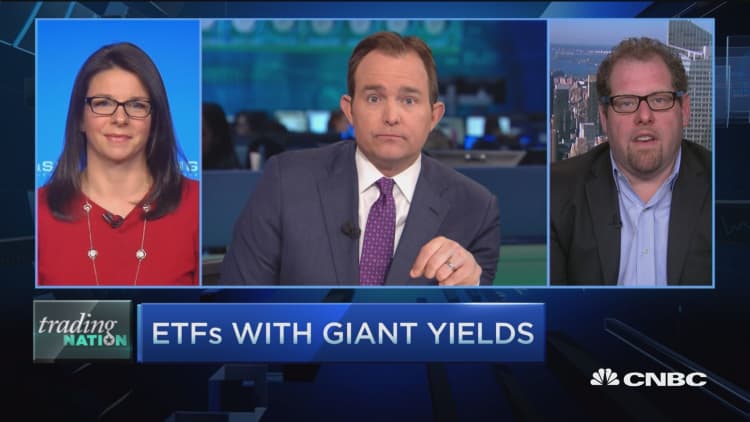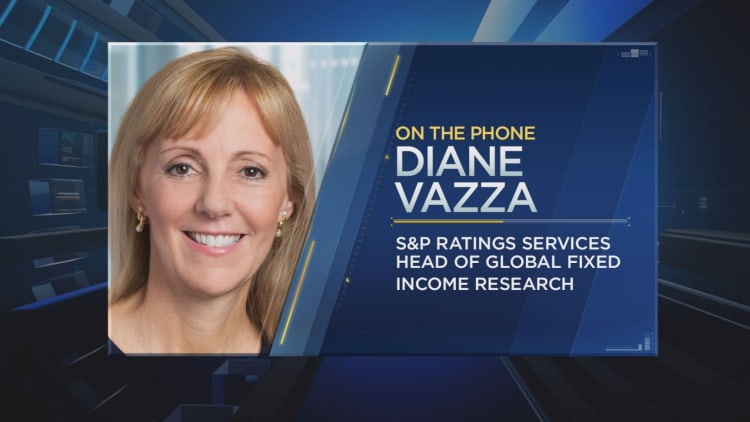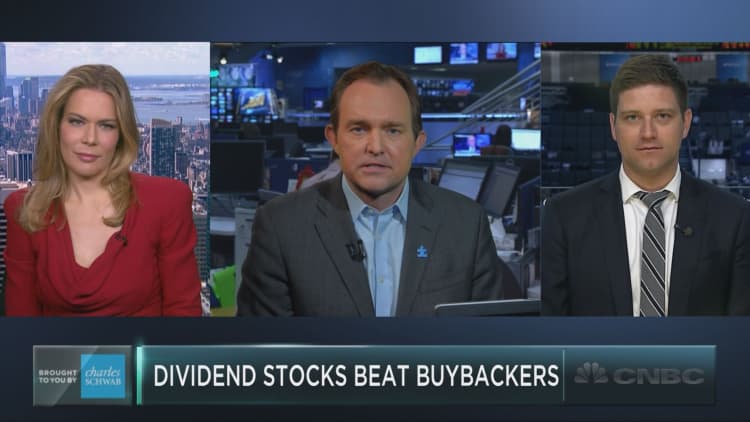


In a low-rate world, investors who hunger for yield may need to get creative.
The 10-year Treasury yield fell Friday to 1.72 percent. And amid the rate rout, even the amount earned on low-quality bonds is dropping, with the yield spread enjoyed by investors in speculative-grade fixed income contracting in March even as the default rate rose to six-year highs.
Read More Bad news: Bond defaults are on the rise
Some richly yielding options still present themselves, however. Among those are three large ETFs that each have dividend yields above 9 percent.
| ETF | Yield (%) |
|---|---|
| iShares Mortgage Real Estate Capped ETF | 11.7 |
| Alerian MLP ETF | 11.5 |
| PowerShares CEF Income Composite Portfolio | 9.1 |
The highest-rate option among those is the iShares Mortgage ETF (REM), with a dividend yield of nearly 12 percent. This product is designed to track a set of real estate investment trusts that themselves own residential and commercial mortgages.
The two biggest REITs tracked by the mortgage ETF are Annaly Capital Management and American Capital Agency, which themselves yield 11.7 percent and 12.9 percent, respectively. Together, these two make up 30 percent of the ETF's holdings.
Whether an investor should choose to buy the ETF or simply one of those REITs depends on a few factors, but by buying a REIT outright, one would save the 0.48 percent expense ratio. Additionally, diversification is not as big a concern among investors in REITs as in single stocks, since REITs themselves tend to be diversified in their holdings, at least geographically. This mitigates one of the biggest typical advantages of picking an ETF over a single stock.
As to liquidity, Annaly tends to trade more than 8 million shares per day, and American Capital 3 million shares, versus well less than a million for the ETF.
Finally, the ETF has badly underperformed its two biggest constituents over the past year (and for comparison's sake, those were also its two biggest holdings one year and two years ago, so this isn't merely selection bias at play).
The second ETF on the list, the Alerian MLP ETF (AMLP), has the distinction of actually drawing in money this year.
This well-known product tracks energy master limited partnerships, and is thus a bet on American energy infrastructure. Unsurprisingly, the product has not fared well over the past year, as oil prices have tumbled.
But while the two other names on the list has suffered mild outflows, AMLP generated $253 million of net creations in 2016, according to ETF.com.
Read More Dividend payers are crushing big buybackers
The final ETF, the PowerShares CEF Income Composite (PCEF), tracks closed-end funds that themselves generate income by holding bonds and by pursuing certain options strategies.
This is probably not the most expense-efficient product, as it charges a 0.5 percent management fee for bundling other products that themselves charge sometimes-hefty fees. It also appears to be far less liquid than many of its constituents.
On the upside, however, the ETF houses a large number of funds, with no one or two products making up the lion's share. So for those who desire income but abjectly refuse to decide on how that income ought to be generated, this might be an attractive choice.
More generally, Max Wolff of Manhattan Venture Partners has a warning to all those who are considering investing in the three ETFs, or in any other super-high-yield products, be they ETFs, stocks or bonds.
"I think that we should look at suspiciously priced assets with all the fear that you would deeply discounted street food," Wolff said Tuesday on CNBC's "Power Lunch." "It's definitely not something you want to imbibe without a lot of skepticism."






